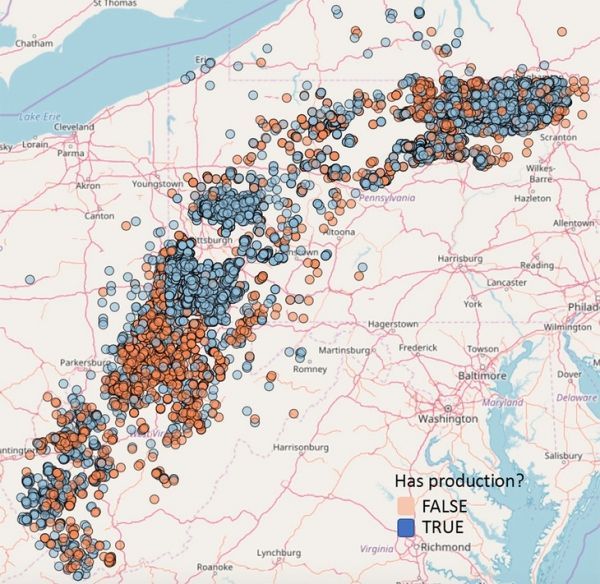A new method for exploring natural gas in the Marcellus Shale, developed by Penn State researchers, shows potential high yield areas can be found more easily and with lower costs.
Traditionally, natural gas hot spots are determined using a combination of current well production data and various geological tests. The researchers, in work published in the SPE Reservoir Evaluation & Engineering journal, detailed a method for approximating available gas in untapped areas using well production data taken from more than 5,600 existing wells.
Researchers used only wells with more than two years of production logs and assigned a decline curve analysis — the amount of production loss over time — for each well. They then applied these decline curves over the entire region of the Marcellus Shale. That allowed researchers to forecast the amount of gas that would be generated over time if a new well were created. Researchers then validated their findings using geological maps, which were created from core samples.
“Rather than looking at these geological proxies for production we’re just looking at production itself,” said Eugene Morgan, Penn State. “By looking at just production and mapping we see that it agrees really well with these geological variables related to production, which validates our approach. By looking at production alone you’re directly targeting the information you’re after.”
Continue reading at Pennsylvania State University
Image via Pennsylvania State University


